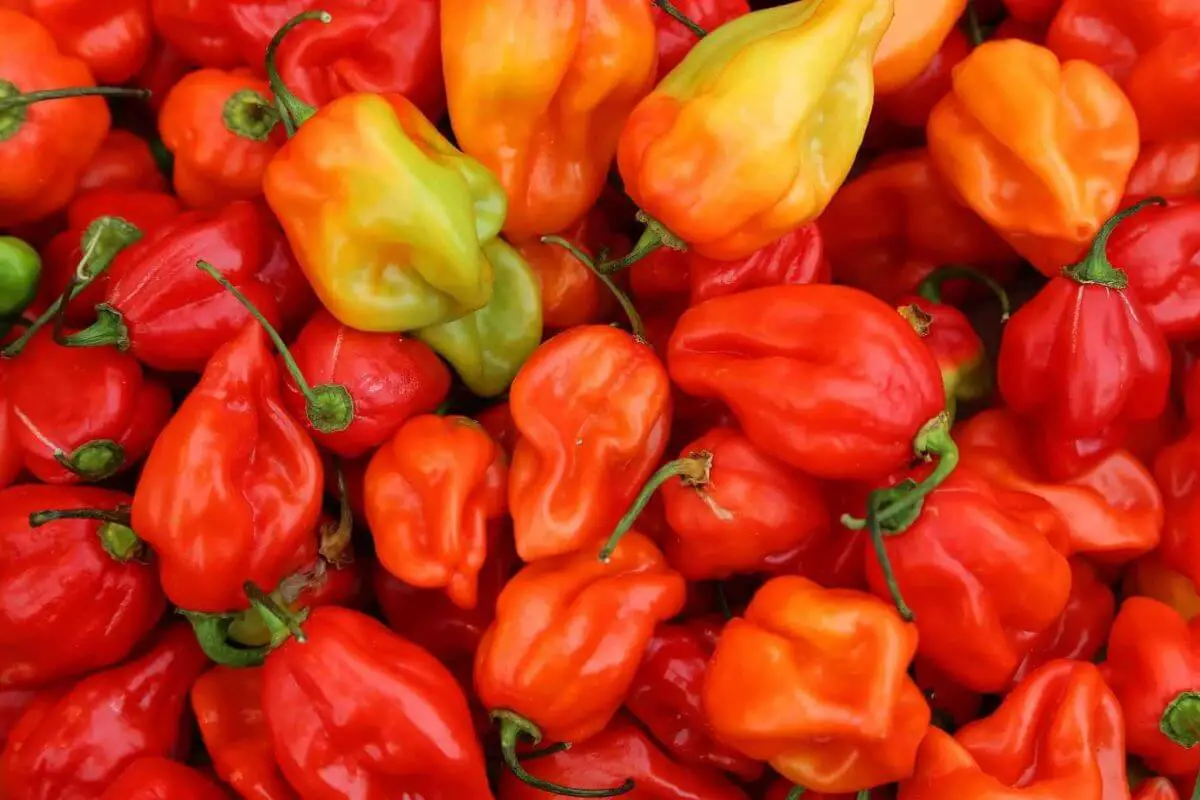When it comes to adding a fiery kick to your dishes, few chili peppers can match the intensity of habaneros. Among the habanero family, the red and orange varieties stand out as popular choices for spice enthusiasts and chefs alike. But what sets these two apart? In this article, we’ll delve into the distinct characteristics and culinary uses of red and orange habanero peppers to help you decide which one suits your taste buds and recipes.
Introduction
Habanero peppers are known for their intense spiciness and unique flavor profiles. Red and orange habaneros are two of the most commonly found varieties, and their differences extend beyond their vibrant hues.
The Habanero Heat
Both red and orange habaneros are renowned for their fiery heat, but there are subtle variations in their spiciness. Red habaneros tend to be slightly hotter than their orange counterparts. The heat of habaneros is measured on the Scoville Heat Scale, and we’ll explore this in more detail later.
Color and Appearance
As the names suggest, the primary difference between these two peppers is their color. Red habaneros, when fully ripe, boast a deep crimson hue, while orange habaneros exhibit a bright, fiery orange color. In terms of size and shape, they are quite similar, with a lantern-like appearance and a wrinkled texture.
Flavor Profile
Beyond their fiery heat, both red and orange habaneros offer unique flavor profiles. Red habaneros tend to have a slightly fruity and smoky flavor, which intensifies as they ripen. On the other hand, orange habaneros are often described as having a citrusy and tropical fruit-like flavor with a hint of floral notes.
Culinary Uses
The choice between red and orange habaneros often comes down to the flavor profile you desire for your dishes. Red habaneros are favored in recipes where the smoky and fruity notes complement the overall flavor. They work well in salsas, marinades, and spicy sauces. Orange habaneros, with their citrusy kick, are excellent for adding zing to tropical dishes, fruit salsas, and seafood.
Growing and Harvesting
Both red and orange habanero plants have similar growing requirements. They thrive in warm climates with plenty of sunlight and well-draining soil. Habaneros are typically harvested when they reach their full color and size, signaling their ripeness.

Scoville Scale
The Scoville Heat Scale measures the spiciness of chili peppers. Red habaneros typically range between 100,000 to 350,000 Scoville Heat Units (SHU), while orange habaneros fall slightly lower on the scale, ranging from 100,000 to 250,000 SHU. Keep in mind that individual peppers can vary in heat, so it’s essential to taste-test before adding them to your dishes.
Health Benefits
Both red and orange habaneros contain capsaicin, a compound known for its potential health benefits, including pain relief and metabolism boosting. These peppers are also rich in vitamins and antioxidants, making them a healthy addition to your diet when consumed in moderation.
Conclusion
In the red vs. orange habanero showdown, the choice ultimately depends on your palate preferences and the flavor you want to infuse into your culinary creations. Red habaneros bring smokiness and fruitiness, while orange habaneros offer citrusy and tropical notes. Whichever you choose, handle them with care, as their fiery heat demands respect in the kitchen.
FAQs
1. Are red habaneros hotter than orange habaneros?
Yes, red habaneros tend to be slightly hotter on the Scoville Heat Scale than orange habaneros.
2. Can I use red and orange habaneros interchangeably in recipes?
While you can substitute one for the other, keep in mind that their flavor profiles differ, so the choice should align with your desired taste in the dish.
3. How can I reduce the heat of habanero peppers in a recipe?
To reduce the heat, remove the seeds and inner membranes of the habaneros before using them in your dishes.
4. Are habanero peppers good for weight loss?
The capsaicin in habanero peppers may boost metabolism, but they should be consumed as part of a balanced diet for weight management.
5. Can I grow habanero peppers in pots or containers?
Yes, habanero pepper plants can thrive in large pots or containers as long as they receive adequate sunlight and care.
6. Are habanero peppers safe to eat raw?
Habanero peppers can be eaten raw, but they are extremely spicy. Be cautious and use them sparingly in raw dishes to avoid overwhelming heat.
7. How do I store habanero peppers to keep them fresh longer?
To extend their shelf life, store habanero peppers in a paper bag or airtight container in the refrigerator. You can also freeze them for longer-term storage.
8. Are there any safety precautions when handling habanero peppers?
Yes, it’s crucial to wear gloves when handling habaneros, especially if you have sensitive skin. Avoid touching your face, eyes, or other sensitive areas, as the capsaicin can cause irritation.
9. Can habanero peppers be used in sweet recipes?
Yes, habanero peppers can add a unique sweet-spicy flavor to desserts like chocolate or fruit-based dishes when used in moderation.
10. How can I reduce the spiciness of a dish if I’ve added too many habanero peppers?
To lessen the heat, you can dilute the dish by adding more non-spicy ingredients like tomatoes, dairy products, or sugar. Balancing the flavors is key.
11. Are there any health risks associated with consuming habanero peppers?
While habanero peppers offer health benefits, excessive consumption can lead to digestive discomfort, so it’s advisable to enjoy them in moderation.
12. Can I grow habanero peppers indoors in colder climates?
Yes, habanero pepper plants can be grown indoors in pots or containers, providing they receive sufficient light and warmth.
13. How do I dry habanero peppers for later use?
To dry habanero peppers, string them together and hang them in a well-ventilated area or use a food dehydrator. Once dried, you can crush them into flakes or grind them into powder.
14. Are habanero peppers used in traditional cuisines outside of their place of origin?
Yes, habanero peppers have made their way into various cuisines worldwide, adding their distinct heat and flavor to dishes far beyond their Central American origins.
15. Can I grow red and orange habaneros in the same garden?
Certainly, you can grow both red and orange habaneros in the same garden. Just be mindful of cross-pollination if you plan to save seeds for future planting.
Now that you have a comprehensive set of FAQs about red and orange habanero peppers, you’re well-equipped to explore the world of fiery flavors and culinary creativity. Enjoy your spicy culinary adventures!



